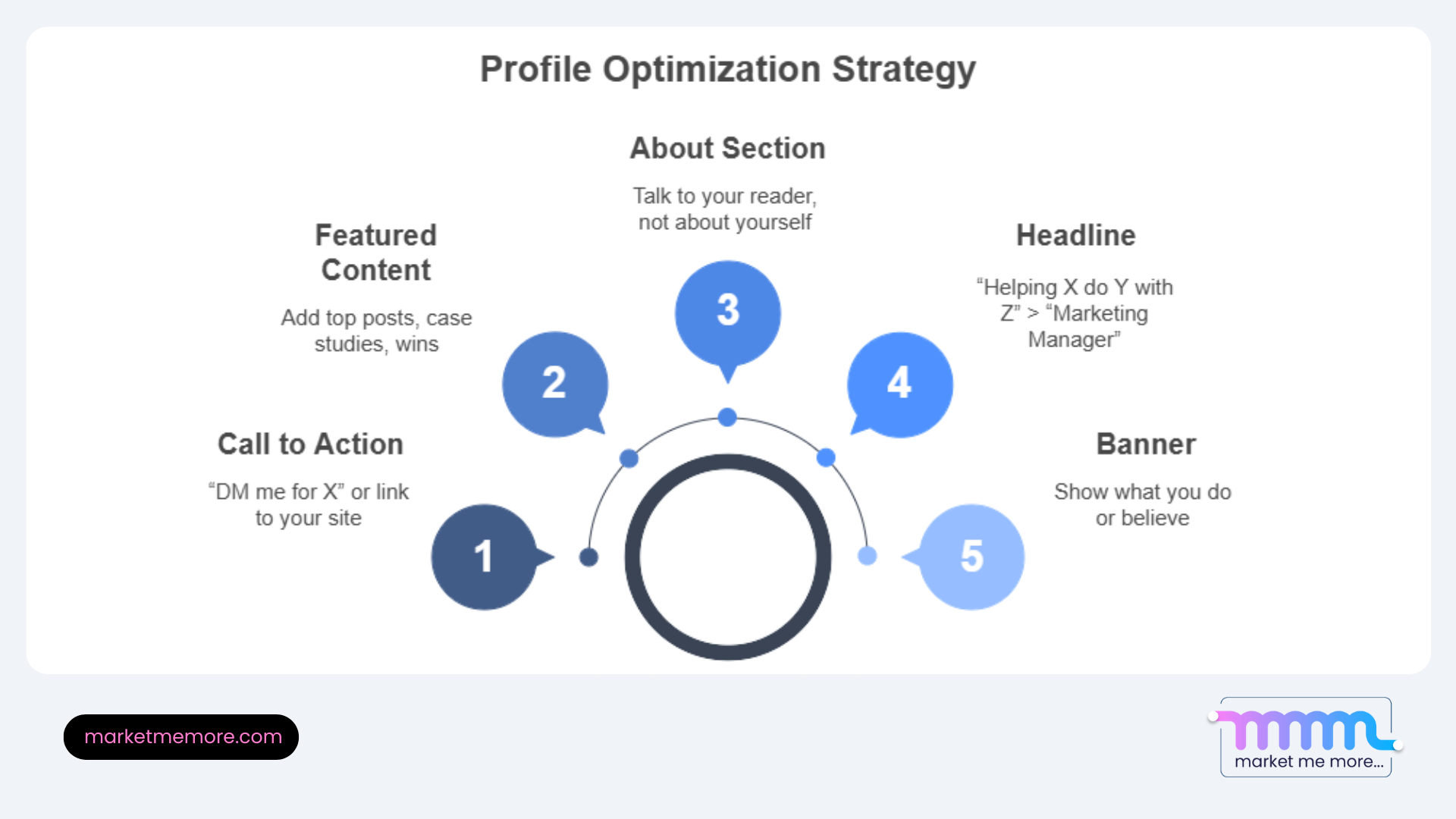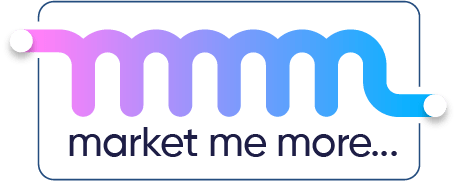The LinkedIn DM Strategy that Top Digital Marketing Agencies Use

“No one replies to my DMs.”

Yeah. Probably because they’re boring, generic, or sound like a pitchslap from 2012.
That was the cold open for this week’s Market Me More livestream. Most LinkedIn outreach today feels like it’s written by someone who just completed a digital marketing course but skipped the "how to sound human" module.
In this session, Shubham Garg and Nikki Estes shared how they build actual connections on LinkedIn that lead to sales conversations, partnership opportunities, or at the very least, earned marketing and visibility.
Whether you're a digital marketing manager at a growing startup or a freelance marketing pro running email marketing campaigns solo, this one's for you.
The Data: LinkedIn is a Goldmine (If You Use It Right)

Let’s set the stage:
- 82% of B2B marketers say LinkedIn delivers their greatest content marketing success (CMI Research)
- But cold LinkedIn DMs average less than 8% reply rates (and most of them are negative).
- And yet 89% of decision-makers say they are open to talking via LinkedIn if the message is relevant (LinkedIn Sales Solutions)
The issue? Most people are treating LinkedIn like a paid search agency would treat Google Ads: high volume, low personalization. Except this isn’t search engine marketing services. It’s social media. Be social.
The 3 Reasons Most DMs Fail

Let’s call it what it is:
“Most DMs fail because they’re trying too hard, not trying at all, or trying to sell before saying hello.” – Shubham Garg
The top offenders:
- The Pitch Slap
“Hi, I help busy founders 10x leads with AI-powered cold outreach...”
No intro. No context. No connection.
- The Fake Flattery
“Been following your work for years...”
You connected with me yesterday. Don’t lie to get attention.
- The No-Context Bomb
“Would love to connect.”
Why? How? What do you want? Don’t make people guess.
This is where the human part of LinkedIn gets lost. It’s a networking platform, not a lead list with avatars. If your DM reads like a cold email, you're doing it wrong.
The 3C Framework that Digital Marketing Consultants Use: Curiosity. Context. Collaboration.

This is the foundation of every outreach campaign Nikki and Shubham build.
1. Curiosity
Lead with something worth responding to, like a sharp question, an insight, or even a challenge. But don’t fake it.
- Bad: “Curious if you’re open to discussing your growth goals...”
- Better: “Saw your post on X. Do you think Y would work better in your market?”
Why are you reaching out to this person? What’s the connection, even if it’s thin? Mention the event, the post, the mutual connection, whatever makes it not random.
3. Collaboration
No hard asks. Offer something. Invite them into something. A blog. A quote roundup. A virtual event.
“Would love to include your POV in our blog on how software firms approach marketing. Got 2 mins for 2 questions?”
That exact message led to multiple replies, backlinks, and future sales conversations.
Anatomy of a Winning DM of a Digital Marketing Manager

Here’s one from Shubham that worked like a charm:
“Hey [First Name], I’m writing a blog on how software development companies think about marketing. Got 2 mins to answer 2 short questions? Would love to include your take and backlink your site.”
Why it worked:
- Hyper-targeted to the right ICP
- Clear ask with low time investment
- Gave something (visibility and backlinks)
- No mention of a call or pitch
Compare that to this mess:
“Been following your work and wanted to reach out personally. My team specializes in email marketing templates delivered 35% faster and 20% cheaper than US devs. If this sounds interesting, reply YES and I’ll send more info.”
That message:
- Opens with fake flattery
- Sells immediately
- Doesn’t tailor to the recipient
- Doesn’t offer any social proof or link
- Puts the onus on the prospect to move forward
Shubham’s take?
“If you’re trying to sell email templates to someone who sells email marketing… do your homework.” - Shubham Garg
Targeting Isn’t Optional. It’s the Whole Game.

Before you send a single message, you need clarity on your Ideal Customer Profile (ICP). That includes:
- Location: If you only serve North America, don’t waste connection slots on folks in Sydney.
- Seniority Level: Don’t chase CEOs if mid-level managers are your true buyers or champions.
- Industry: If your offer is designed for B2B SaaS, don’t message realtors or boutique retailers.
Bonus tactic from the livestream: multi-thread your outreach.
That means targeting multiple stakeholders inside one company—marketing manager, head of sales, founder, etc.—because the real decision-maker isn’t always the person with “Chief” in their title.
How Humor Can Break Through (and Still Sell)

One campaign that stood out for us at Market Me More?
The Defenestration Campaign
Yes, defenestration—as in, throwing someone out a window. The message?
“Did you know there’s a word for throwing someone out a window? It’s defenestration. I just got promoted and I’m competing with my ex-boss to see who gets more replies. Loser gets defenestrated. Respond and save me.”
It was weird. It was funny. And it worked.
It got 2–3x the usual response rate.
But as Shubham pointed out, humor isn’t universal.
“If your audience is full of battle-hardened execs, maybe skip the memes. But if they’re building in public, sharing their startup mess—go for it.” - Shubham Garg
Know your audience. And don’t be afraid to break pattern.
Engagement Before Outreach: The Warm-Up Ritual

You don’t have to lead with a DM. In fact, if you’re connecting cold, Nikki recommends this sequence instead:
- Like their post
- Comment with actual value
- Then send a DM that adds to the thread
Want to use ChatGPT to help with comments? Cool. But don’t have it write the whole thing. Use it to sharpen your thought, not fake one.
Also: if you're referencing someone’s post in the DM, include the link. Otherwise, you’ll get a “what post are you talking about?” message two weeks later.
Follow-Ups That Don’t Feel Desperate

It takes 7–9 touchpoints for a sales conversation to even begin. That’s straight from HubSpot’s Sales Benchmark Report.
So getting left on “seen” isn’t a red flag. But following up poorly is.
Bad:
- “Just bumping this up.”
- “Any thoughts?”
- “Putting this at the top of your inbox.”
Better:
- “Wanted to share a case study from another [industry] company we worked with.”
- “Saw this article and thought of your recent post.”
- “Here’s a quick stat that made me think of your team.”
Make every follow-up feel like a new reason to engage. Not a guilt trip.
Your Profile = Your Landing Page

Once someone reads your DM, guess where they go?
Your profile. Not your website. Not your company page.
That means:
- Your headline should say what you help people do. Not just your job title.
- Your banner should highlight a current offer, event, or product.
- Your featured section should include high-performing posts, lead magnets, or media.
- Your About section should read like a human wrote it. Not your HR department.
“If you’re promoting something—like an event, a book, or even a lead magnet—your banner and featured section should reflect that.” - Nikki Estes
It takes five minutes to update. It can make or break the DM response.
The Final Piece: Show Up Every Week

DMs aren’t a one-day blitz. They’re a weekly rhythm.
Here’s what Shubham suggests:
- 30 minutes, 5 days a week
- 5 custom connection requests
- 2–3 thoughtful follow-ups
- 1 new comment thread
Use the 4-tab method:
LinkedIn post → Company site → Offers page → LinkedIn company page
That’s enough research to craft a solid message without falling into the “I need 2 hours per prospect” trap.
Be a Human. Not a Sales Bot.

If you’re serious about growing your network, growing your sales pipeline, and not getting marked as spam, here’s what to remember:
- Generic DMs don’t work.
- Real curiosity and context do.
- Humor can help—but only when targeted.
- The pitch comes after the relationship.
- Your profile has to back up your message.
- Consistency beats volume every time.
What To Do Next
If you want help fixing your DM strategy, optimizing your profile, or building a scalable outbound system that doesn’t sound like everyone else:
- DM “WARM UP” to Shubham or Nikki on LinkedIn
- Subscribe to the LinkedIn Mastery Newsletter for weekly tactics and livestream recaps
And if you’re still pitch slapping strangers… stop. Or as Shubham would say, “Get your strategy out the window—before someone defenestrates it for you.”
